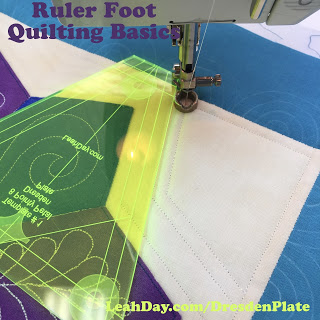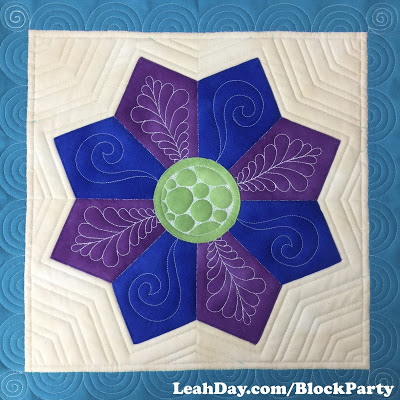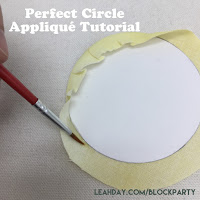How to Piece a Pointy Eight Petal Dresden Plate
To get started piecing this Dresden Plate quilt block, you’ll first need to create a cutting template so you can cut the unique wedge shapes for this block. Click Here to find a tutorial on creating your cutting template.
You could also skip this step by picking up the Dresden Plate Template Set which comes with Template #1 used for this Pointy Eight Dresden Plate. We’ll be using all of these templates to make different Dresden Plates for the Machine Quilting Block Party this year, plus using them for ruler foot quilting as well!
And finally one more step of prep for this block is to create a turning template and turn the edges of the center circle. Click Here to find another tutorial on creating the center circle.
Once you create your cutting template, cut out your pieces carefully. Now let’s learn how to turn those simple wedge shapes into awesome pointy Dresden Plate petals!
Click Here to find the pattern for Block #2.
What do you think of the easy pointy petals? Isn’t that a fun technique? I love being able to create the point easily by stitching across the top and turning the shape right side out.

I value precision piecing and knowing that my Dresden Plate will finish flat and perfectly round. This is why I piece this plate together in sets of 2 petals, then check to make sure each quarter section is square and straight. It’s a little extra step that can make a big difference!
When it comes to securing the Dresden Plate to the block background, you have a lot of options. The option I shared in this video was to stitch 1/8 inch inside the turned edge of the Dresden Plate petals. You could also use a decorative stitch and you could stitch this by hand.
Would you like to see a tutorial on hand applique and how to stitch this turned edge down so no stitching shows? Let me know in the comments below and I’ll shoot an extra video on hand applique!
With Block #2 pieced, the next step is to machine quilt it and we’re going to explore many beautiful designs this month. We’ll learn how to quilt Pebbling, more feathers, Swirl Spirals, and ruler foot quilting on your home machine. Be looking for a new Quilting Basics video on Wednesday to help you get the basics of ruler foot quilting!
Let’s go quilt,
Leah Day



Do you cut the background away from the appliqued Dresden plate? Some applique you do, not sure if you recommend cutting the material away from the back of the Dresden plate before quilting?
Thank you,
Leah, what thread is best for the edge stitch to appliqué the Dresden plate? Should it be the regular gutermann cotton like I would use to piece the block or should it be the polyester isacord thread like what you recommend for the FMQ. Maybe it doesn't matter but thought I would ask…
It really doesn't matter for the applique thread. I used Aurifil cotton because that's what I'd been using for piecing, but if I had had a spool of Isacord in that color I could have used that too. Just so long as the stitches hold firmly it's a great thread to use.
I didn't cut away the extra fabric, but you certainly can if you want to. It will definitely make it easier to quilt over with less fabric in the quilt sandwich.
Leah, do you use the same stitch length for applique as you do for piecing? Not sure if you have covered this already 🙂 Thank you.
I use the same short stitch length – 1.5mm for applique as for piecing. It keeps the stitches small and secure on the surface of the block.